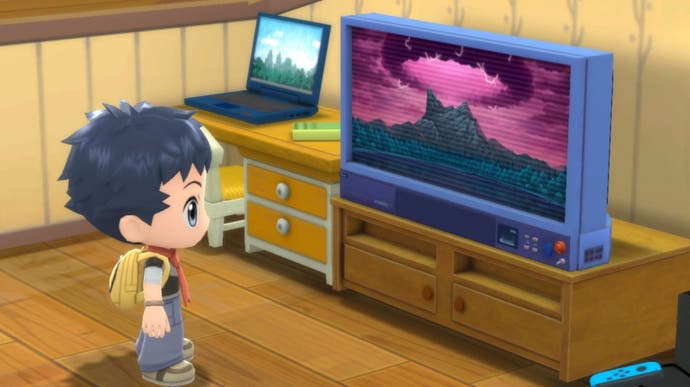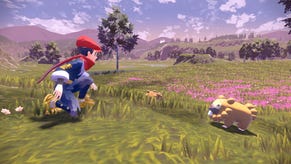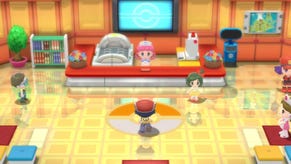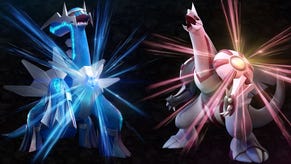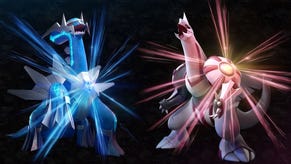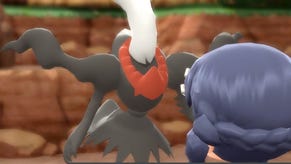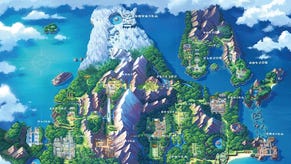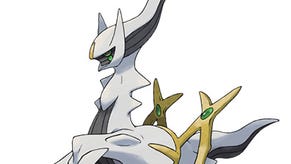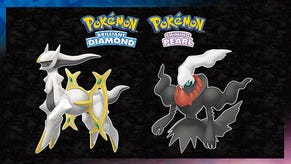Pokémon Brilliant Diamond and Shining Pearl review - gen four remade, in the wrong places
Bigoof.
Let's talk about the Experience Share. The Experience Share (Exp. Share for short) is a simple tool, present in every main series Pokémon game since 1999's Pokémon Gold and Silver, that shares the experience one Pokémon gains from defeating others in battle with the others in your party. It's useful for a few things, but the big one is your experience of the game itself: the Exp. Share is the single most influential tool you have for manipulating the difficulty of the game, helping your whole team level up faster with it on, or slower with it off.
Over the years, as public tastes have changed - and main series developer Game Freak's with them - it's become kinder, moving from sharing experience with just a single other Pokémon to with your whole party, then experience itself changed from being earned just via battles to all successful catches of wild Pokémon, too. And then finally, most generously and most dramatically, with the arrival of Pokémon Brilliant Diamond and Shining Pearl it's also now been locked to "on" for the entirety of generation eight.
In the other generation eight games, Pokémon Sword and Shield, this isn't too big a deal - the games themselves were, at least in theory, built around things working that way, and so whatever you may think of their pacing, the opposition trainers, their Pokémon and their levels were placed in that game with the mechanic in mind, the game created with some intention towards it as a whole. But Brilliant Diamond and Shining Pearl, naturally, aren't built from the ground up to accommodate an always-on Exp. Share.
They're remakes - very close remakes, it turns out - of 2006's Pokémon Diamond and Pearl, which are very different games to the Sword and Shield of 2019, and so the result is predictably messy, the eighth-gen's easy, weightless momentum plonked into the fourth-gen's world, its trainers, encounters, and opponents all largely identical to the originals in level and stats and strength. It means that while only ever battling trainers, catching previously un-caught wild Pokémon, running from all other encounters and occasionally swapping the odd 'mon out of my party, I was still consistently eight to ten levels above my opponents throughout. To counter that I can halve the amount of Pokémon I regularly carry in my team, or try to dodge as many trainers as possible, but that's hardly ideal - and could easily be avoided by simply including the option to turn the Exp. Share off.
What really lingers, though, is how indicative this is of Brilliant Diamond and Shining Pearl as a whole. The original games were strange, uneven things, with some curious difficulty spikes in battles, a famously bizarre type imbalance (a fairly Steel-heavy game with just the one Fire-type evolution line to counter it, the less-than-useful Ponyta and Rapidash, if you didn't choose the Fire-type starter), some weirdly easy-to-miss HMs, and a Chibi-and-pixel-art mix of styles. They're coarse and awkward but, crucially, at least characterful as a result, and Brilliant Diamond and Shining Pearl's catch-all attempts to smooth that over - like the parachuting in of the always-on Exp. Share - result in something more bluntly palatable but far less natural, smoothed in all the wrong places like an oil-based portrait yassified through FaceApp. More simply: they've just remastered the wrong stuff.
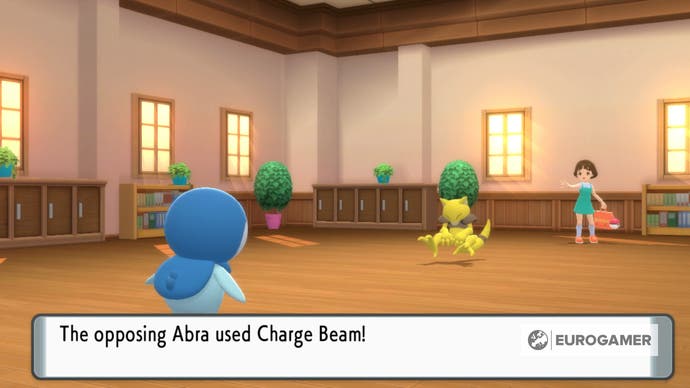
Brilliant Diamond and Shining Pearl occupy a tricky spot in the series. For the first time, the Pokémon Company is publishing a main series game that is not developed by Game Freak, with BDSP instead handled by ILCA (short for I Love Computer Art), the studio behind Pokémon storage app Pokémon Home that's also supported development of games like Yakuza 0, Dragon Quest 11, and NieR: Automata. It's also releasing just a couple of months before Pokémon Legends: Arceus, which is being developed by Game Freak, and is set in the same Sinnoh region as generation four's Diamond, Pearl and Platinum, but is a prequel rather than a remake.
The tricky spot comes from the fact Pokémon fans have been clamouring for "Sinnoh remakes" for months, if not years, in the hope that they would get the same contemporary reimagining that we've had with the prior three generations of FireRed and LeafGreen, HeartGold and SoulSilver, and Omega Ruby and Alpha Sapphire. The only thing predictable about the Pokémon Company is its unpredictability, however, so instead of the straight current-gen-visuals-and-mechanics-applied-to-classic-games treatment, we're getting two different kinds of game altogether. Legends: Arceus gets seemingly the most advanced mechanics yet, bringing Pokémon into a pseudo open world, while BDSP act as something of a half-step, leaving the likes of freely moving cameras, higher-detail models, moves, and animations, Mega Evolution, and the contemporary equivalent of Dynamaxing out, in the hope of still attracting new players to the Sinnoh region and tickling the nostalgia button for those who wanted to revisit.

It's a shame, not just because the three prior rounds of remakes have delivered some of the very best games in the series, carrying a sense of completeness with them as they take new features back to visually enhanced versions of already complex game worlds. It's a shame because BDSP are for the most part actually perfectly good fun, and so there's a hefty sense of opportunity missed.
On the surface, the setup is identical to Diamond and Pearl - not Platinum, which added quite a bit of new story and an expanded Pokédex of available 'mon to catch (including a couple more Fire-types). Generally, wherever things digress between those two and the enhanced version, it picks the earlier two. So, the Hearthome Gym is the fifth one you'll take on rather than the third, the available Pokémon in the wild correspond to the same version of the originals, the stories follow the events of the two originals, and so on.
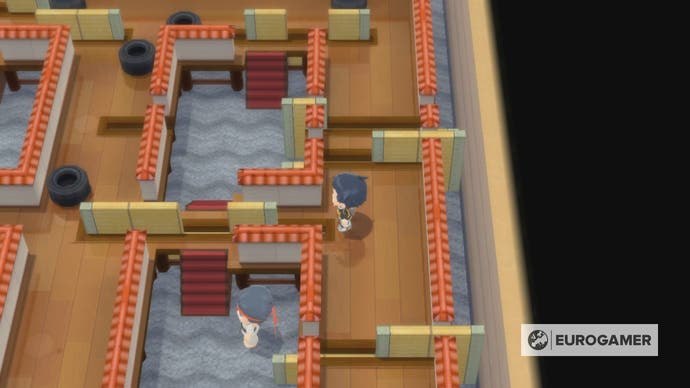
Where things sort of merge is the Grand Underground, a reimagined area that exists below the surface of Sinnoh and features miniature Wild Area-like rooms, where Pokémon roam visibly on the overworld (standard random encounters are all you get topside), and a very addictive mining minigame that grants you some handy items. Technically this area brings even more encounters than Pokémon Platinum, and most are available at around the same time you'd have been able to get them in Platinum itself - but, a little disappointingly, the vast majority are still locked behind late-game progress, requiring you to beat the main story to access them. That's another shame, as there's not a huge incentive to go back and hoover up all these extra Pokémon when you've finished most of the story in which you might have used them.
It's still an improvement though, and one of the places where BDSP does at least get things right in terms of iterating on the originals: the Grand Underground is fun and, crucially, a bit weird, which Pokémon must always be in some way - it's also massive, creating a sense of wonder and exploration, like there's a whole other half of a game to literally dig into whenever you fancy it, even if that half of the game is relatively one-dimensional.
The other changes are pretty minimal. There's a new rhythm-based mini-game to Pokémon Contests, a niche part of the originals that's fun for role-players, but totally self-contained. Chatting to townspeople you'll hear lots about how you can choose to be the type of Pokémon Trainer you want, battling through Gyms to beat the Elite Four and save the world, or just collecting cute Pokémon to use in contests, but as any series regular knows that fantasy doesn't really ring out in any meaningful sense, and never really has in Pokémon games. You can do the latter, but to experience it fully - catching more Pokémon, learning more moves, picking up more Poké Ball stickers (a minor new addition) - you are going to need to do the former first anyway.


The final big one is the reworking of hidden moves, or HMs, the metroidvania-like abilities that gate your progress in Pokémon games. In BDSP, they're mapped to the Pokétch, a screen you can bring up picture-in-picture to use on the fly, and crucially they're decoupled from the moves themselves. When you acquire the Pokétch app for an HM, and defeat the correlating Gym Leader that allows you to use it, you can then use it freely in the wild, without teaching any moves to Pokémon in your party or carrying anything with you. Instead, a wild Pokémon - usually a Bidoof, which feels like a fun nod to that being the go-to HM slogger of choice in the originals - will do the tree-chopping and rock-smashing for you. It's a very welcome change, although it would be nice to find a solution that feels more personal - like a given one of your caught Pokémon that helps you, even if it's not in your party, for instance, which seems especially feasible when you can now access your storage boxes to swap Pokémon from anywhere on the fly - and it's slightly odd that Game Freak and co. haven't found that yet.
Otherwise, the changes are all small, nonetheless very welcome user-experience things like that on-the-fly box access and the ability to lob a Poké Ball from the battle screen without having to root around in your bag. One obvious one is a standout: the ability to have one of your party Pokémon follow behind you, a consistent fan request that is a delight to see returning. These things are small touches, but they bring the world to life, and that liveliness is so essential to what makes Pokémon such a beloved thing - these are games about the wonder of wildlife, after all. It's right there in the word.
Last of all is the aesthetic, which is always personal but in my eyes sadly hard to love, and I suspect that goes for many others, too. The style here is chibi but in a fairly limited, literal sense, oversimplified character models with sticker-like eyes, underanimated Pokémon and moves, again feeling like there's been a desire to remaster something but not the most brilliant decision about what. Gone is the impressionist, occasionally poetic pixel art that asks something of the player, leading them to fill in gaps with imagination and mystery.

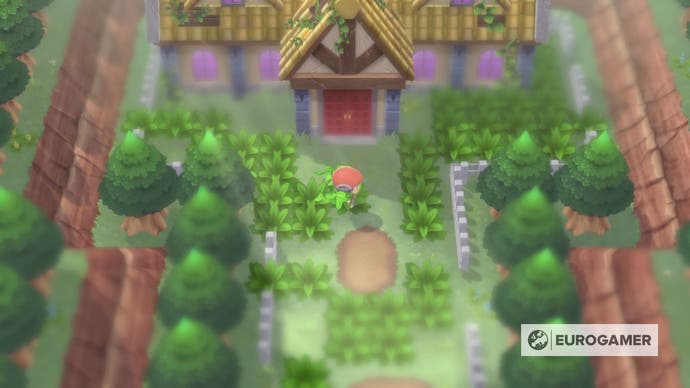
The replacement is a flat and utilitarian thing. It gets close to something good at times, the softness of dawns and sunsets are often beautiful, a nice reminder of the originals' fun day-night feature. It hints at a kind of Animal Crossing-like snugness, but gets nowhere near - the key to that ultra-tactile hygge world is the minutiae of visual detail, sure, but also an immense amount of audio detail too, that Brilliant Diamond and Shining Pearl can't match, a polyester carpet next to a hand-spun woollen rug. It also, somehow, loses some precision of the simple up-down-left-right navigation of the original in the process - walls are weirdly sticky when half run against while using the analog stick.
And that, somewhat sadly, sums things up with these games. It's hugely frustrating, not least because the originals, for all their quirks, were at least memorable for those quirks, and their brilliant structure remains as great as ever. There are great mysteries and alluring side areas that give the series its essential, near-superlative aura of wonder - the deeply spooky Old Chateau and its paintings' blinking red eyes, for instance, buried in an easily missable section of Eterna Forest. The gigantic, looming Mt. Coronet that pierces upwards from the centre of the region and wants to suck you into its magnetic bowels. The ruins, mines and marshes of Sinnoh. The many sidequests and puzzles of mythical Pokémon like Spiritomb and Darkrai. On and on.
It's all there, all still wonderful and utterly worthy of your time. There is a real, tangible, brilliant Pokémon game within Brilliant Diamond and Shining Pearl, and it's worth playing if you've never touched the originals. But with these remakes slapping glossy paint over so much of their wizened texture, I do think you're better off with those originals themselves.
